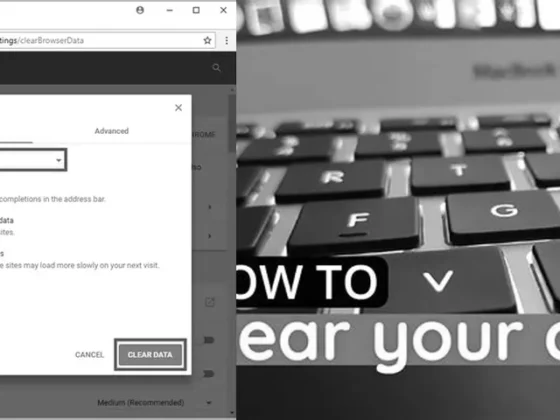Can You Use A Docking Station On A Chromebook: Are you tired of juggling multiple devices and cables while trying to stay productive on your Chromebook? Well, fret no more! In this blog post, we will explore the wonderful world of docking stations and how they can revolutionize your Chromebook experience. So, the burning question on your mind – Can you use a docking station on a Chromebook? The answer is a resounding YES! But that’s not all, my friend. We will dive into the nitty-gritty details, debunk common misconceptions, and reveal some productivity-boosting tips along the way. Get ready to supercharge your Chromebook and take your productivity to new heights with the magic of docking stations!
Maximizing Productivity: Using Docking Stations with Chromebooks
Chromebooks, known for their simplicity and cloud-based efficiency, have become a staple in educational institutions and among users who prioritize portability and ease of use. However, with evolving needs, the question arises: Can you expand the capabilities of a Chromebook to match a traditional desktop setup? Docking stations stand as a potential solution to this query.
Understanding the Docking Station Compatibility
Before diving into the specifics, it’s crucial to understand that not all docking stations are designed to be universally compatible. The compatibility largely depends on the ports and software support available on the device you’re using. For Chromebooks, the USB-C port is the gateway for docking station connectivity.
The Power of USB-C on Chromebooks
Modern Chromebooks come equipped with USB-C ports that serve multiple purposes. They can charge your device, offer display-out capabilities, and support data transfer at speeds up to 5Gbps. This versatility is what allows Chromebooks to connect with docking stations effectively. Using a docking station, you can transform your Chromebook into a more powerful workstation.
Expanding Visual Real Estate
Connecting External Monitors
One of the primary benefits of a docking station is the ability to connect multiple external monitors. With a Chromebook, you can add up to 1-3 external displays. This feature is particularly useful for users who need to multitask or require additional screen space for their projects.
Limitations in Processing Capabilities
While docking stations can enhance the number of displays, it’s important to note that Chromebooks are equipped with low-end technology that is not optimized for heavy tasks like video rendering or editing. Additionally, software compatibility is a concern, as Chromebooks do not support the full version of Adobe Photoshop. This limitation is crucial for creative professionals who rely on such software.
The Shelf: Chromebook’s Native Dock
Chromebooks have their own version of a dock, aptly named the shelf. This feature allows users to pin their most frequently used apps and web pages for quick access. It’s a built-in convenience that mirrors the functionality of a physical docking station in a virtual format.
Compatibility with Dell Docks and Others
Dell universal docks, which use DisplayLink software and USB connections, provide a solution for devices that may not be compatible with commercial docks. These docks are versatile, supporting various operating systems including Windows, macOS, Android, ChromeOS, and Ubuntu. However, it’s worth noting that the USB bandwidth can limit performance, which is a consideration for devices that require high data transfer speeds.
Choosing the Right Docking Station for Your Chromebook
When selecting a docking station for your Chromebook, it’s essential to consider the specifications of your device and the docking station. Since docking stations are not universally compatible, checking the support for your specific Chromebook model is important to avoid any connectivity issues.
Protecting Your Chromebook from Damage
While using a docking station can bring numerous benefits, it’s also crucial to take care of your Chromebook to avoid damage. Applying excessive pressure on the Chromebook, especially on the screen, can cause significant damage. Additionally, care should be taken when inserting cords, cables, and removable storage devices to ensure the longevity of the device’s ports.
Enhancing Your Chromebook Experience
With the right docking station, you can significantly enhance your Chromebook’s functionality, turning it into a more versatile tool for work and play. Whether you need extra monitors for better multitasking or a more desktop-like experience, a docking station can provide that flexibility while respecting the inherent limitations of Chromebooks.
In conclusion, while Chromebooks have certain restrictions in terms of processing power and software compatibility, the use of a docking station can mitigate some of these limitations by providing expanded connectivity options. By carefully selecting a compatible docking station and taking proper care of your device, you can maximize the capabilities of your Chromebook, making it a more powerful ally in your daily activities.
FAQ & Related Questions about Using a Docking Station on a Chromebook
Q: Can I use a docking station with a Chromebook?
A: Yes, you can use a docking station with a Chromebook. However, not every docking station is compatible with every type of laptop, so it’s important to check compatibility before purchasing.
Q: Can I connect multiple external monitors to a Chromebook using a docking station?
A: Yes, you can connect up to 1-3 external monitors to a Chromebook using a docking station. This allows for a multi-monitor setup, which can be useful for productivity or multitasking purposes.
Q: Do Dell docking stations work with Chromebooks?
A: Yes, Dell universal docks can work with Chromebooks. These docks use DisplayLink software and USB to provide a solution for computers that are not compatible with commercial docks. They support various operating systems, including ChromeOS.
Q: What precautions should I take when using a Chromebook with a docking station?
A: When using a docking station with a Chromebook, it’s important not to lean on top of the Chromebook or place anything near it that could put pressure on the screen. This pressure could potentially damage the LCD screen. Additionally, cords, cables, and removable storage devices should be inserted carefully to avoid any damage.
Q: Can leaving a Chromebook plugged in for a long time damage the battery?
A: Yes, leaving a Chromebook plugged in for an extended period of time can potentially damage the battery. If left plugged in for too long, the batteries might no longer function and can’t be recharged. It’s also not recommended to keep Chromebooks plugged into a cart or charger while in storage for months, as this can reduce battery life and lead to other issues.


